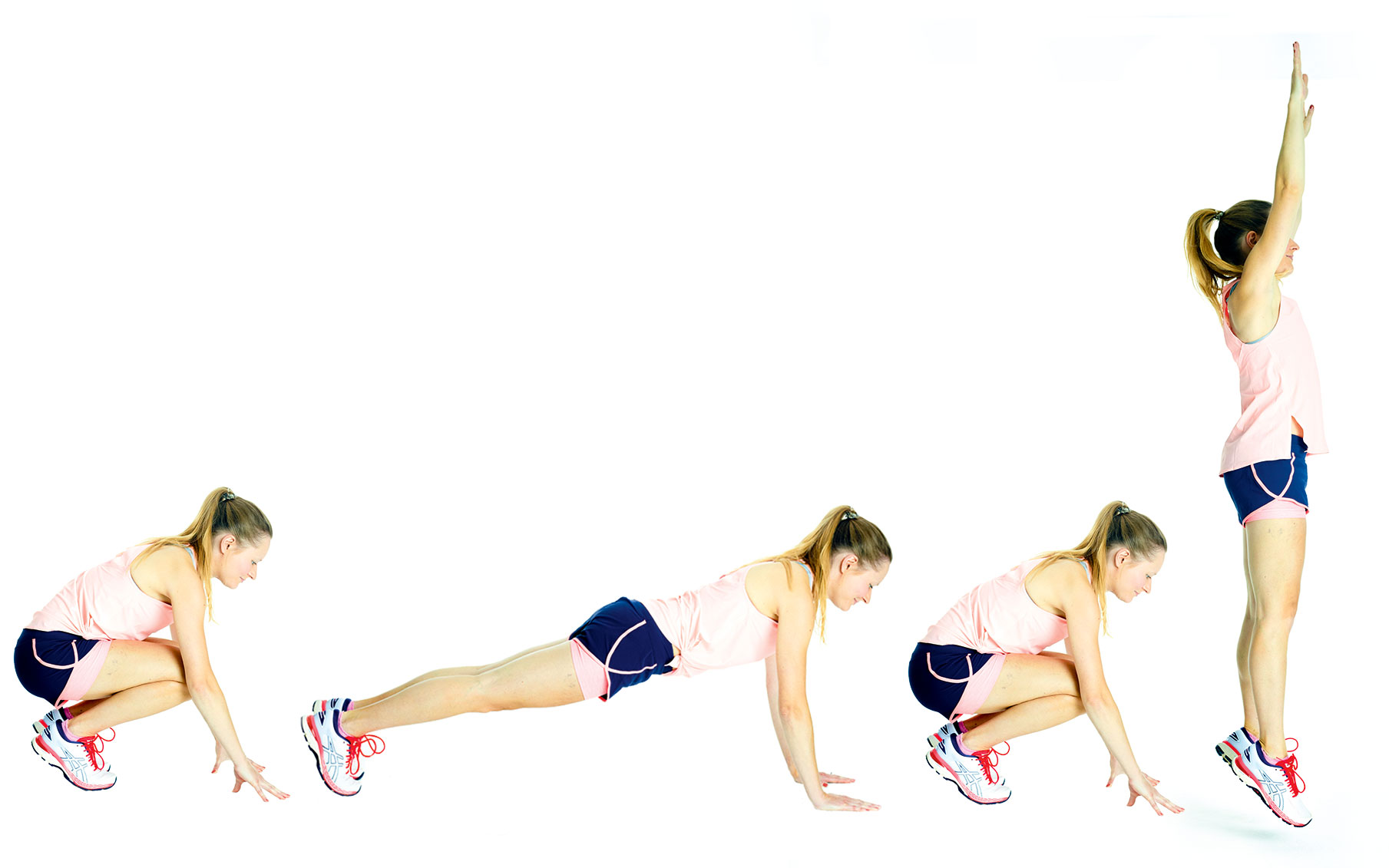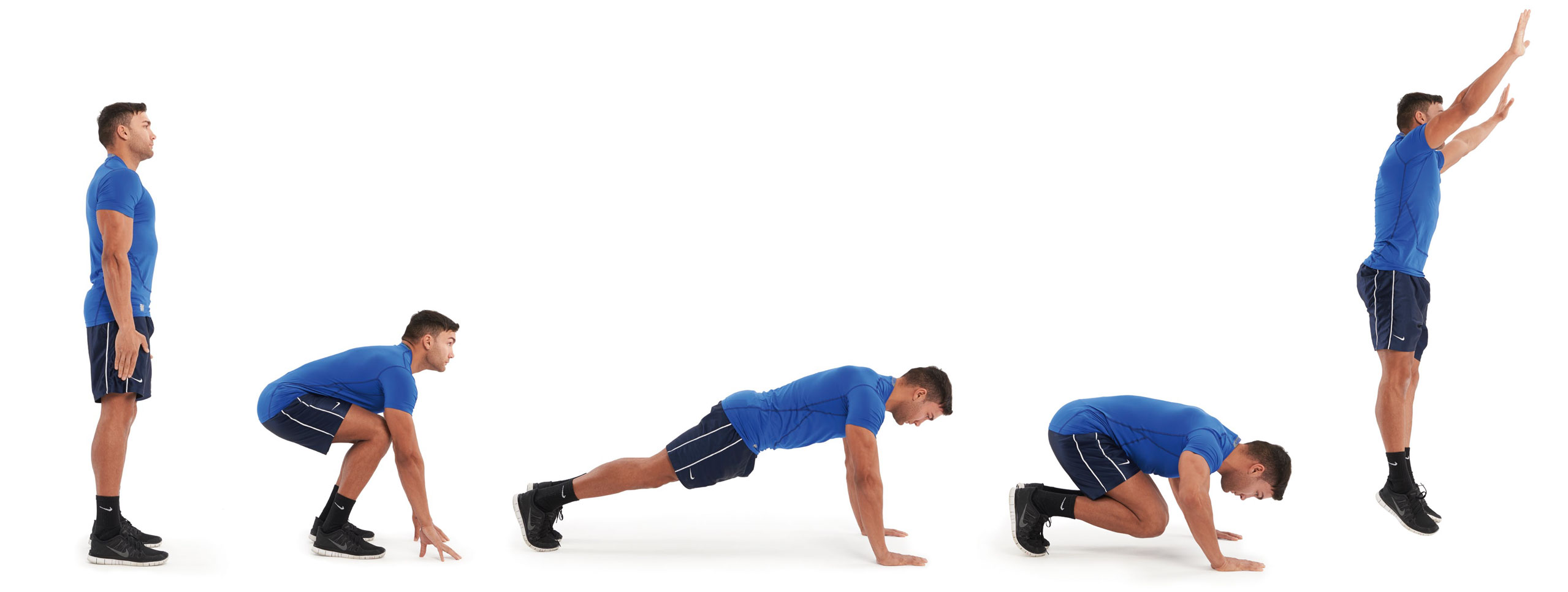How to do a burpee
Master exactly how to do a burpee with these tips, and discover all the muscles worked by this exercise


Knowing how to do a burpee can take your workouts to the next level because this move gets your whole body working together. Here you’ll find all you need to know to tackle this move safely, and if you’re wondering; what muscles do burpees work? We’ve got that covered too.
Taking a spin on one of the best exercise bikes can be an intense workout, but the benefits of burpees make them well worth it. In fact, a study from the Journal of Strength and Conditioning Research concluded that burpees work your body harder than bike sprints.
One of the easiest ways to know how to do burpees is by breaking down the movement into sections. They can be pretty intense, and that’s because you’re making your body do a push-up, squat thrust, and a vertical jump all in quick succession.
If you’ve tried out high-intensity interval training (HIIT) then it’s likely that you’ve come across burpees before. Because burpees are so tiring, it’s best to build them into a HIIT workout where you do short bursts of activity and then rest in between.
There is science behind this too as one study published in the journal PLOS One, found that doing 30 minutes of HIIT exercises, such as burpees, was actually just as effective for improving muscles and cardiovascular endurance as if participants did 150 minutes of low-intensity exercise. This makes burpees particularly great if you’re short on time and need an effective workout in a hurry.
Below, you’ll find our step-by-step guide on how to do a burpee plus some great variations if you want to mix it up. For other workout inspiration, head to our features on how to do squats and how to do a push-up.

How to do burpees: where to start

If you’ve never done a burpee before, we’ll show you how to do a squat thrust first. Once you’ve got this movement down, we’ll go on to the main event, followed by a couple of challenging variations.
Start your week with achievable workout ideas, health tips and wellbeing advice in your inbox.
The squat thrust is ideal for those looking for dynamic, tiring exercises that test muscular endurance and provide a tough cardiovascular workout. Primarily, squat thrusts target a number of muscles in the legs, specifically those in and around your thighs, namely the glutes, quads and hamstrings.
They also provide additional benefits; as well as making the heart work hard, they also test out the muscular endurance of your arms, chest and, of course, the core. If you want to really push your body, several sets of squat thrusts at a high tempo (providing you’ve mastered the correct technique) is a great place to start.
Squat Thrust

- Get on your hands and knees, with your arms bent a little and your legs pushed forward. Your weight should be equally distributed between your hands and the balls of your feet. Raise your hips and kick your feet back.
- Keep your legs together and extend them straight as they move back. At the same time, straighten your arms to stiffen your upper body. By the time your feet land, you should be in a push-up position.
- Without pausing, quickly bring your legs back to the starting position. Think of the movement as jumping forwards, but without lifting your hands. Your upper body will move forwards slightly and your arms should bend a little.
- Once you’re back in the starting position, go back into another squat thrust. Do this until you’ve completed the required number of repetitions. Alternatively, see how many you can do without stopping – we guarantee that you’ll need a serious breather afterwards!
How to do a burpee

Burpees are about the best total body exercise around, mixing squat thrusts, push-ups and jumps. While performing burpees, you shouldn’t pause at all – one movement should naturally lead into the next. Tiring!
- Stand up tall with your feet shoulder-width apart and your hands by your sides.
- Get down into a squat thrust starting position, with your hands placed on the ground, shoulder-width apart in front of you.
- Kick your legs out to get into the plank position. Quickly lower yourself down until your chest is just above the ground.
- Push back up to return to the plank position. Bring your legs forward so that you’re back in the squat thrust starting position.
- Regain your feet and stand up. As you’re standing up, jump up. When you’ve landed, move straight onto your next repetition.
Variation: Burpee jack

If you want to make burpees even tougher, try this variation that mimics the movements of jumping jacks. It’s a guaranteed fat burner that will get your heart pumping.
- Perform a standard burpee up to, and including, the point where you kick back into the plank position.
- As you’re lowering your body down in the push-up phase, kick your legs out to the side.
- As you push back up into the plank position, bring your legs back together.
- Continue the rest of the burpee as described on the previous page, changing the standard jump for a jumping jack. Simple!
Variation: Single-leg burpee

Burpees are tough whatever way you do them, though few make your muscles fatigue quicker than this gruelling single-leg variation.
- Stand up tall with your hands down by your side, but with your right foot raised behind you at knee height and your left foot on the floor. Keep your right foot raised as you get down into a squat thrust position and kick back into a push-up.
- Perform the push-up on one leg, holding your right leg in its raised position. Jump back into a squat-thrust position, remembering to keep your right leg raised behind you.
- As you stand up, use your standing leg to dynamically jump up in the air. Remember to throw your hands above your head to help power the jump.
- Land on your left foot to complete one repetition.
Matt Evans is an experienced health and fitness journalist and is currently Fitness and Wellbeing Editor at TechRadar, covering all things exercise and nutrition on Fit&Well's tech-focused sister site. Matt originally discovered exercise through martial arts: he holds a black belt in Karate and remains a keen runner, gym-goer, and infrequent yogi. His top fitness tip? Stretch.
